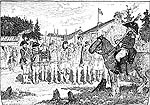
The Militia
Military in the War
The Armies
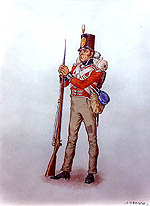
Private in the Militia |
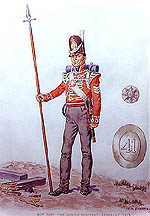
Sergeant of the 41st Regiment |
See more: Comments on the military and weapons.
The British Indian Department
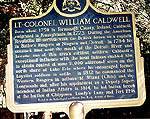
Historic plaque for William Caldwell |
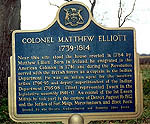
Historic plaque for Matthew Elliott |
The Indian Department also employed guides, interpreters, storekeepers, and clerks. One of their major outposts was at Fort Malden in Amherstburg.
|
One of the unique units from the Western District was a company of rangers formed by Colonel Procter and William Caldwell in 1813. They were trained in forest and Native warfare. Instead of the usual red coat, they were dressed in a plain green one, to act as camouflage. They too carried a musket, but probably carried a tomahawk instead of a bayonet for close combat. Like the Indian Department officers, rangers were used to fight alongside and direct their Native allies. Caldwell's Rangers was actually formed in response to a request by local Native chiefs to start such a unit.
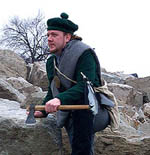
A Caldwell's Ranger |
| The Canadian commanders realized that they needed help to keep control of the Great Lakes. They asked for members of the British Royal Navy to be sent to the Lakes. The British were proud of the Royal Navy, as it was the most powerful navy in the world at that time. The British felt that with members of the Royal Navy helping, the boats on the Great Lakes would be invincible. The Battle of Lake Erie was to change that perception. Trained men and proper supplies were also needed to succeed in battle. |
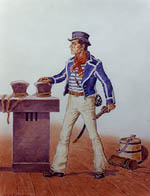
First Rate Seaman |
Visit: Upper Canada Provincial Marine, Amherstburg Division web site.